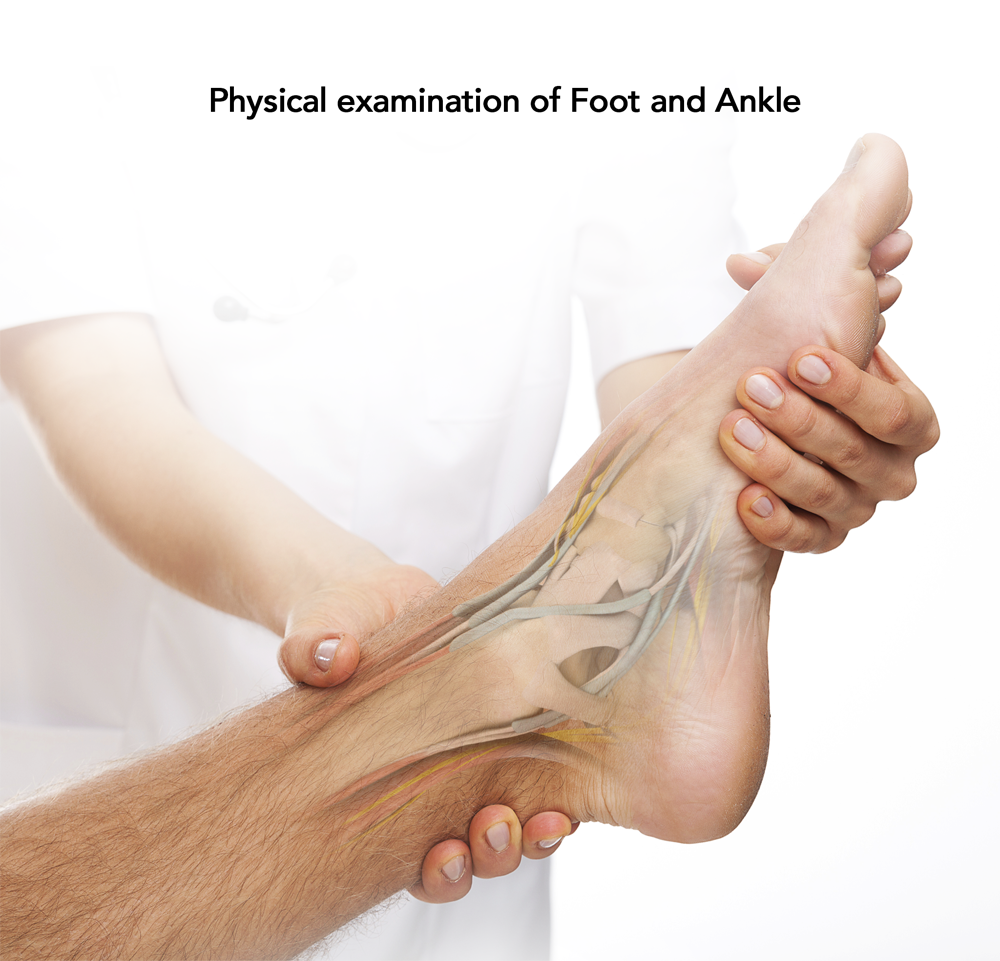Foot and Ankle Problems

Foot and Ankle conditions typically occur due to injury of the muscles, ligaments or bones, due to aging, or certain disorders including gout, bunion, arthritis, claw toes, bursitis, hammertoes, stress fracture, etc.
Foot and ankle problems are associated with symptoms including:
- Pain and inflammation
- A bony growth under the heel
- Stiffness
- Numbness
- Sore foot
- Cracking, itchy skin (foot)
- Burning or tingling sensation
Preparation before a Foot and Ankle Examination
You do not need any special preparation. Your doctor obtains your medical history prior to the foot and ankle examination including:
- Age and occupation
- Family history of joint problems
- If you have lower back pain
- Previous sports injury
- Rheumatoid arthritis
- Vascular diseases
Procedure for a Foot and Ankle Examination
Examination of the foot and ankle is necessary for an accurate diagnosis of injury or disorder. Your doctor may perform the following tests:
- Pain: Your doctor examines the spot or area on your foot where you feel pain. The pain may be dull or sharp. You will be asked to explain the factors which aggravate or decrease the pain, which enables your doctor to establish the exact cause of pain.
- Palpation: Your doctor will use their hands to assess the bones, ligaments, and tendons for any abnormalities.
- Neurovascular Assessment: Nerve function of your foot is established by your doctor which may involve certain tests.
- Deformity: Your doctor carefully observes the deformity occurred due to the injury or disorder.
- Swelling: The area of swelling is necessary to diagnose an injury or the disease. Swelling of the entire foot and ankle may be related to renal or cardiac disorders.
- Standing Position and Gait: Your standing position and gait are carefully examined by your doctor.
- Sitting Position: You are seated on an examination couch so that your legs hang loosely, making it easier for your doctor to examine specific symptoms in your foot such as redness, swelling, cracking, bony growths, etc.
- Muscle Function Tests: Specific tests are ordered to assess your muscle function involving contraction and extension of your leg.
- Special Foot and Ankle Tests: Some special tests are necessary to confirm certain disorders of the foot and ankle. These tests include Thompson’s test, Flat foot test, Mulder’s test, Squat jump, etc.
Physical examination is followed by imaging techniques such as X-ray, MRI or CT scan. Specific laboratory tests may be ordered by your doctor to confirm the type of injury or disorder.





